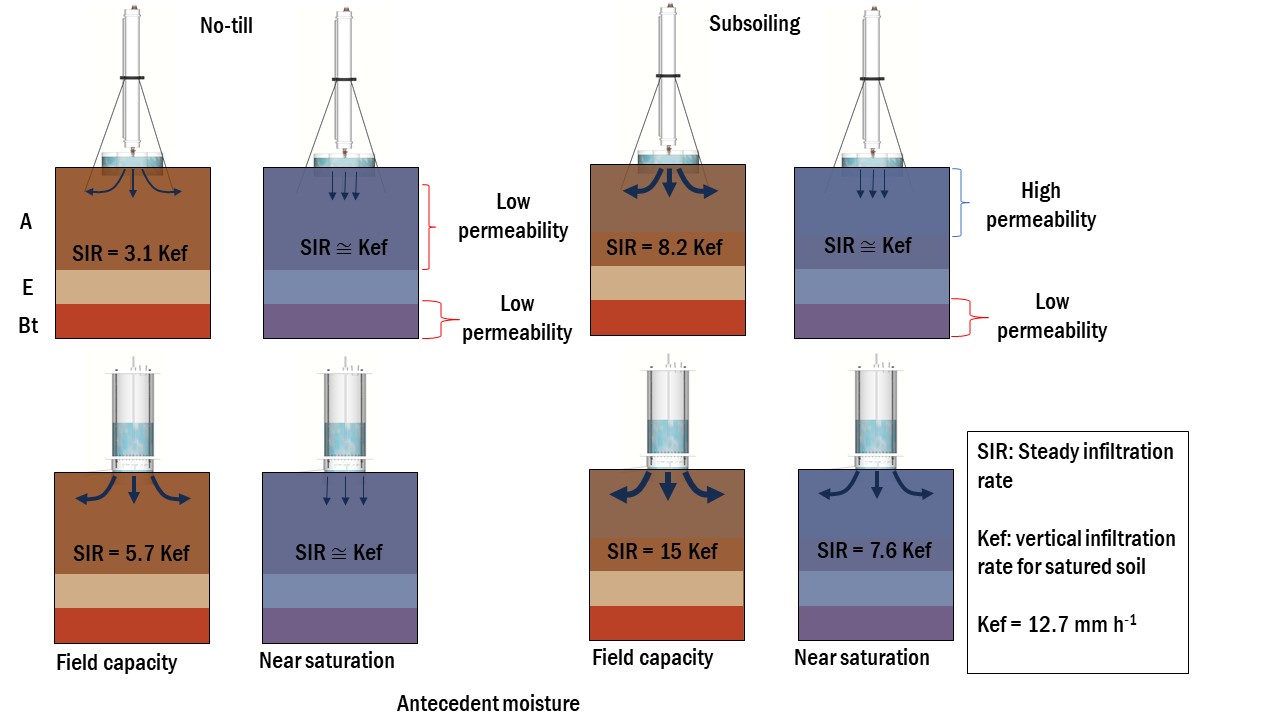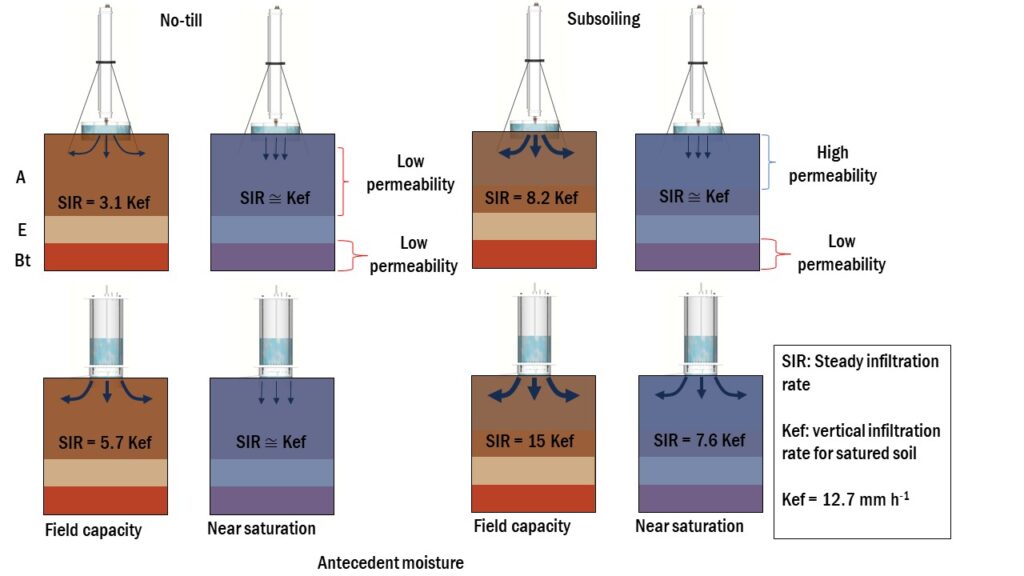Rev. Bras. Ciênc. Solo.2024;48:e0240007.
Steady infiltration rate: Relation to antecedent soil moisture, soil permeability, and measurement method and period
16/jan/2024
DOI: 10.36783/18069657rbcs20240007
Resumo Gráfico

Destaques
Reduction in antecedent soil moisture increased the steady infiltration rate (SIR) by up to 13 times
Subsoiling in no till tripled the SIR
The SIR measured with the Cornell method was nearly twice that measured with the double ring method
Increasing measurement time (2 h to 48 h) did not generate a new lower level of the SIR
ABSTRACT
Soil steady water infiltration rate (SIR) is a key variable in hydrological modeling, but its relationship to antecedent soil moisture is not yet well understood. We tested the hypothesis that the SIR decreases with the increase in antecedent moisture, and that this relationship depends on permeability to water on the soil surface, the measurement method, and the measurement period. We conducted an experiment in an Argissolo Vermelho-Amarelo Distrófico abrúptico (Psammentic Paleudult – Soil Taxonomy), measuring infiltration in up to 14 antecedent moisture conditions under two soil structural conditions (no-till and no-till with subsoiling), with two measurement methods (double ring and Cornell infiltrometers), and for up to 48 h, with ten replications. In addition, vertical effective hydraulic conductivity of the saturated profile (Kef) was determined with Darcy’s equation for N layers. Crop succession used in the area was black oats and ryegrass in the winter and soybean in the summer. The SIR decreased to as little as 7.7 % of its original value with the increase in antecedent moisture; it was ~200 % greater in the treatment with subsoiling compared to no-till alone, and ~80 % greater when measured with the Cornell infiltrometer than with the double ring infiltrometer. Nevertheless, the effects of the method and the soil structural condition declined with the increase in antecedent moisture, confirming our hypothesis. In soil initially nearly saturated (degree of saturation ~90 %), the SIR drew near Kef (12.7 mm h-1) under the two soil structural conditions, especially when measured with the double ring infiltrometer. In contrast, increasing the time for measuring infiltration (>2 h) did not generate a new lower SIR level. The SIR decreases with the increase in antecedent soil moisture, and this relationship depends on the permeability to water of the surface layers and the measurement method. The SIR determined with infiltrometers better corresponds to vertical infiltration the nearer the soil is to saturation before beginning measurement.
197

